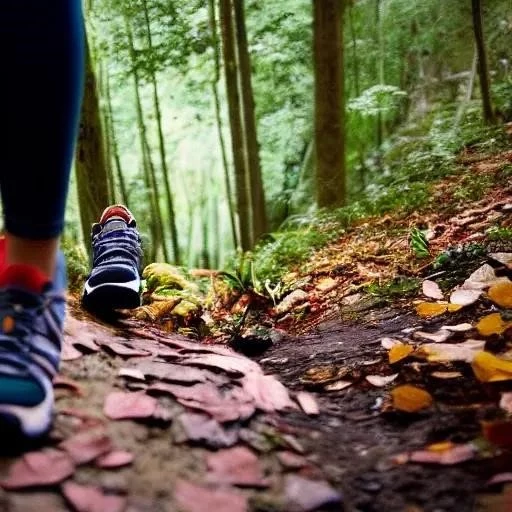
The notion of upsizing footwear might initially feel unsettling, running contrary to decades of ingrained shopping habits. However, by integrating insights from biomechanics, podiatry, and extensive field testing, a compelling narrative emerges. Our feet, these remarkably complex anatomical structures, undergo significant changes during sustained physical activity, particularly when traversing varied terrains with the added burden of a pack. Understanding these dynamic shifts is paramount to unlocking the true potential of your hiking footwear and ensuring that every step taken is one of confident, unburdened progress, rather than a painful countdown to the trail’s end.
Key Considerations for Optimal Hiking Boot Fit
To ensure you’re making the most informed decision when selecting your next pair of hiking boots, consider these crucial factors:
| Aspect | Description | Why It Matters for Sizing | Official Reference / Resource |
|---|---|---|---|
| Foot Swelling | Feet naturally expand during extended physical activity, especially in warm conditions. | A snug boot at the start of a hike can become painfully tight hours later, leading to blisters and discomfort. A larger size accommodates this expansion. | |
| Thicker Socks | Hikers often wear specialized, cushioned, or wool socks for warmth, moisture-wicking, and blister prevention. | These socks add significant volume inside the boot. Your “street shoe” size might not account for this crucial layering. | Backcountry: Hiking Socks Buying Guide |
| Downhill Impact | When descending, your foot slides forward within the boot, causing toes to repeatedly strike the front. | Insufficient toe room leads to bruised toenails (black toenails) and painful toe compression. An extra half-size provides vital clearance. | American Hiking Society: How to Fit Hiking Boots |
| Toe Splay & Comfort | The human foot is designed to splay slightly with each step for balance and shock absorption. | Cramped toes restrict natural foot mechanics, leading to fatigue, numbness, and potential long-term foot issues. | |
| Lacing System | Proper lacing can customize fit, but it cannot compensate for fundamentally ill-fitting dimensions. | A slightly larger boot can be cinched down precisely in the midfoot and ankle, while still offering generous toe room. | L.L.Bean: How to Lace Your Hiking Boots |
The primary driver behind this shift towards a slightly larger boot often centers on the critical issue of foot swelling. After hours of walking, especially with a weighted pack, your feet can expand by as much as half a size. A boot that feels perfectly snug in the store might become a torturous vise on the trail, leading to blisters, hot spots, and even nerve compression. Podiatrists frequently highlight the long-term damage caused by chronically tight footwear, ranging from bunions to ingrown toenails, underscoring the preventative power of proper space. Furthermore, the imperative to wear thicker, performance-oriented hiking socks for cushioning and moisture management also demands additional internal volume. Ignoring this reality is akin to trying to fit a winter coat into a summer jacket – it simply won’t work comfortably or effectively.
Perhaps the most compelling argument for upsizing comes from the relentless forces exerted on our feet during descents; As gravity pulls you downhill, your foot naturally slides forward, causing your toes to repeatedly jam against the front of the boot. This repetitive impact is the notorious culprit behind agonizing black toenails and debilitating forefoot pain. By consciously opting for a half-size or even a full-size larger than your street shoe, you create a vital protective buffer, allowing your toes to splay and move without constant impingement; This seemingly minor adjustment transforms grueling descents into manageable, even enjoyable, sections of your journey.
Industry leaders are increasingly recognizing these nuances, innovating boot designs that offer more generous toe boxes while maintaining a secure heel and midfoot fit. Brands are investing in advanced lasts and materials that cater to the dynamic nature of the foot on the move. “It’s not about wearing clown shoes,” explains Sarah Jenkins, a lead footwear designer at a prominent outdoor gear company, “it’s about understanding foot mechanics under load. We aim for a ‘locked-in’ feel in the heel and ankle, preventing slippage and blisters, combined with ample room for the toes to move and swell naturally; This balance is critical for multi-day expeditions.” Her insights underscore a future where boot fitting transcends mere length, embracing a holistic understanding of foot morphology and trail demands.
Looking ahead, the future of hiking boot fitting promises even greater precision. Imagine stepping onto a 3D scanner that meticulously maps every contour of your foot, accounting for arch height, width, and even potential swelling points. This data-driven approach, already nascent in some high-end retail environments, will undoubtedly become more widespread, offering truly customized solutions that eliminate guesswork. Until then, however, the proactive step of considering a slightly larger hiking boot size remains a remarkably simple yet profoundly impactful strategy. It’s an investment not just in footwear, but in comfort, longevity, and the sheer joy of experiencing the wild, unburdened by foot pain. Embrace the extra space, and step confidently into your next adventure, knowing your feet are perfectly poised for the journey ahead.
